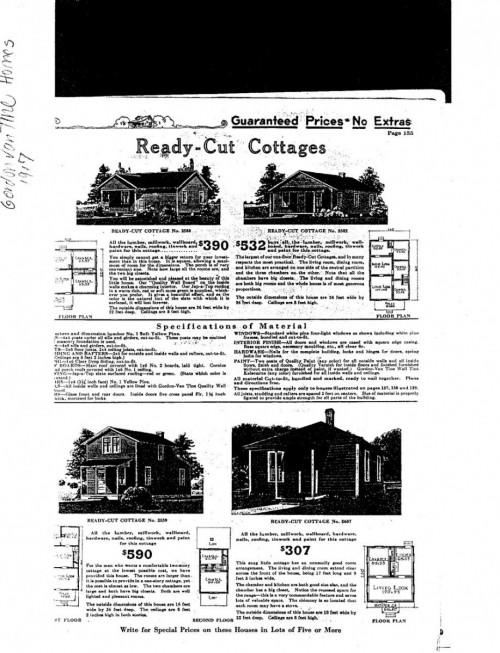The historic “Yellow Barn” (well, it used to be more yellow than it is today) at the corner of Highway 73 and Barkley Road in Conifer has long been a well known and beloved landmark and icon of the mountain community. What many may not know, however, is that it and it’s two accompanying historic houses, are also icon’s of the pre-fab, mail-order construction that was popular across the United States in early 20th Century architecture.
The idea of pre-fabricated and modular architecture has long been of interest to architects world-wide because it not only offers the potential for cost savings based solely on the idea of mass production & common, repeatable elements but also carries the potential ability to offer high-design and quality craftsmanship at an affordable price to the general public. This is exactly the concept used by the Sear’s, Roebuck and Co. in the “Book of Modern Homes” that was freely distributed throughout the country along with their other catalog’s of goods.
“This special Book of Modern Homes which we will send to you free, shows you how much better and how much bigger a house you can build for your money …” ~excerpt from the 1910 Sears, Roebuck & Co. Catalog No. 117
Sears & Roebuck was not, however, the only manufacturer of these “mail-order” homes. In fact, according to national expert and architectural historian Rebecca L. Hunter, Sears was but one of seven major companies supplying pre-cut homes in the United States and Canada in the early 20th Century. The Sears homes, in fact, were often supplied by one of the other companies, such as the Gordon Van-Tine Company from which the three buildings at Bradford Junction were ordered in 1918 by John J. Mullen (nephew of famous Colorado philanthropist J.K. Mullen). All three buildings are still standing to this day, and are a rare collection of multiple early pre-fabricated mail order buildings ordered and built together in a rural location.
EV Studio was hired earlier this year to do a historic investigation of the Bradford Junction property where all three of these pre-fabricated buildings are located. We discovered, through these investigations, that all three buildings were ordered together (a “Ranch Kit”, if you will) from the 1917 Gordon Van-Tine Catalog in the early spring of 1918 (see the related catalog pages below). They were delivered by train from Illinois to Denver, where they were then most likely loaded onto the C&S Narrow Guage Platte Canyon line and delivered to Dawson’s Switch near the bottom of present day Foxton Road. From there, they would have taken a bumpy trip up the narrow canyon road on wagons pulled by livestock and were eventually delivered to the site where they still stand today at the ripe old age of 93!












